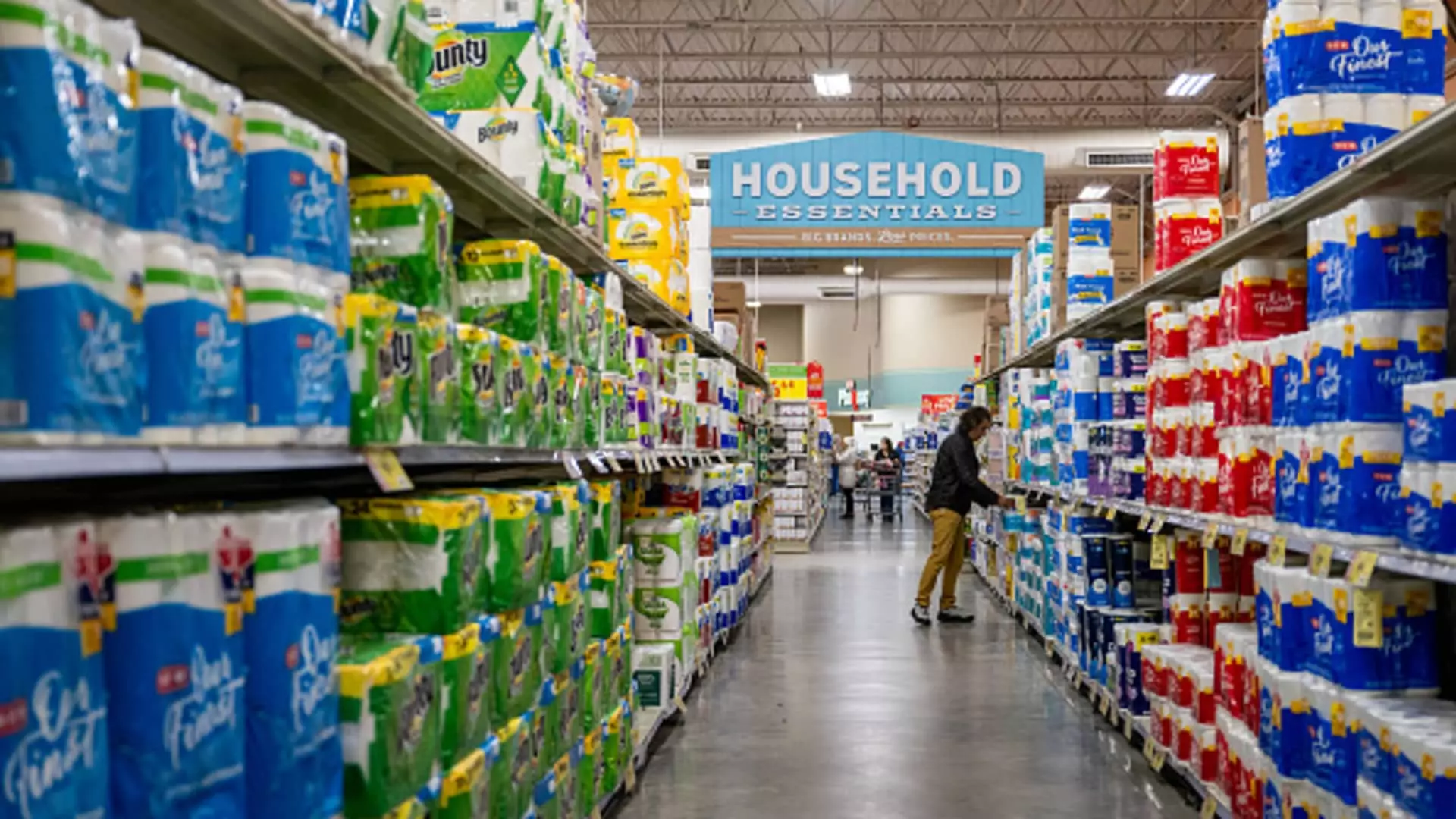The latest tariff implementations from the Trump administration, affecting over 180 nations, present a perplexing scenario that many of us will feel in our wallets. While the intention behind these tariffs is to revive American manufacturing and create local jobs, the reality is that the average consumer is poised to bear the brunt of this initiative. Essential goods like coffee, bananas, vanilla, and even toilet paper are set for price hikes; a trend that transforms economic nationalism into a direct taxing of the everyday shopper.
Proponents of the tariffs argue that by elevating import costs, America can shore up its domestic market and wean itself off reliance on foreign products. However, this approach is riddled with flaws. As pointed out by industry representatives, significant ingredients and materials crucial for daily U.S. consumption are unavailable domestically. The head of the Consumer Brands Association (CBA) highlighted this absurd disconnect, indicating that the actual implementation of these tariffs contradicts the very notion of “America First.”
Climate Constraints: A Recipe for Increased Costs
In this age of climate-consciousness, few people realize how climate limitations affect agricultural output. The U.S. is unlikely ever to produce a substantial portion of its coffee or tropical fruit needs due to its geographical limitations. In 2023, America imported an astounding percentage of its bananas from Guatemala alone, a country that now sees these exports facing a 10% tariff. Have the policymakers considered the implications of restricting access to such dietary staples? By imposing tariffs, they gamble on increased domestic production that simply cannot materialize, all while forcing consumers to pay more for items that are inherently scarce in local production.
Vanilla serves as another poignant example. Madagascar is the source of more than three-quarters of U.S. vanilla imports, and with tariffs jumping as high as 47%, the creative culinary usage of this beloved spice is about to become a rare luxury. Will Americans suddenly pivot to using cheaper synthetic alternatives to a staple that once held a place of pride in American cooking? The answer is sadly indicative of a society where economic nationalism undermines cultural richness.
A Shifting Agricultural Landscape: Who Will Fill the Void?
The landscape of American agriculture is shifting dramatically. Best demonstrated through the decline of oat production over the last century, it’s evident that a reliance on imports is no longer a choice but a necessity. The data confirms that over 90% of the oats processed for American consumption are imported from Canada. This disturbing trend begs the question: Are we prepared to meet increasing demand with dwindling local supply? Unfortunately, domestic agriculture cannot expand quickly enough to compensate for imports as tariffs escalate.
This lack of foresight on the part of our policymakers threatens not only food prices but also compromises the stability of vital household goods. As raw material costs rise—think wood pulp for toilet paper or shea butter for cream products—brand manufacturers will inevitably pass these increases down to the consumer. This could lead to price surges in essentials that we unwittingly take for granted.
Stock Markets and Consumer Goods: A Contrary Reality
Ironically, while everyday citizens brace for inflationary spikes, the financial market tells a different story. Following the announcement of these tariffs, stocks in consumer staples, such as Procter & Gamble and Coca-Cola, rallied as investors sought safety in companies selling routine necessities. This detachment from reality embodies the paradox of modern capitalism; while investors cheer rising stock prices, the typical consumer becomes increasingly priced out of the goods they need for daily living.
How can we align these two opposing forces? Tariffs intended to bolster national interests could inadvertently unravel the very fabric of consumer access, as rising costs squeeze middle-class families. It is time to examine whether the political rhetoric surrounding tariffs is worth the genuine economic pain felt daily by the American public.
These excessive tariffs may create jobs in the short term, yet they threaten to raise consumer prices and reduce choice, while ultimately harking back to an agricultural reality that no political manipulation can change. In the pursuit of an idealized economic nationalism, we must ask ourselves: who really benefits, and at what cost?

